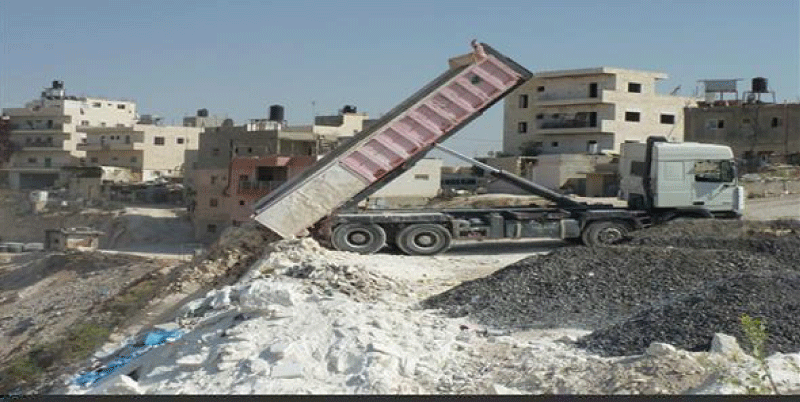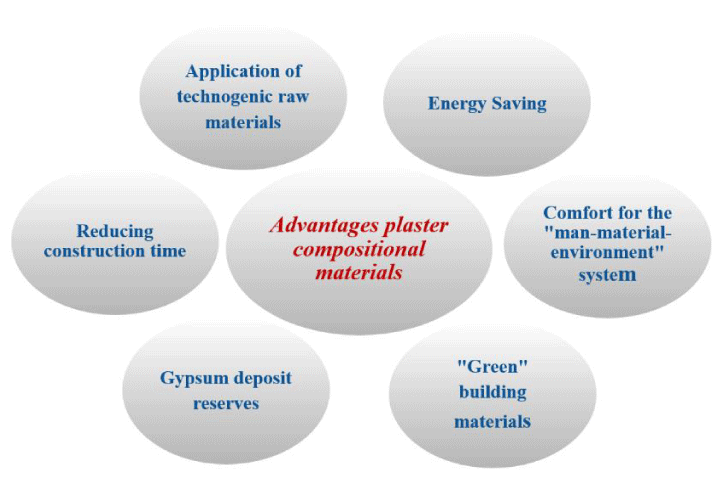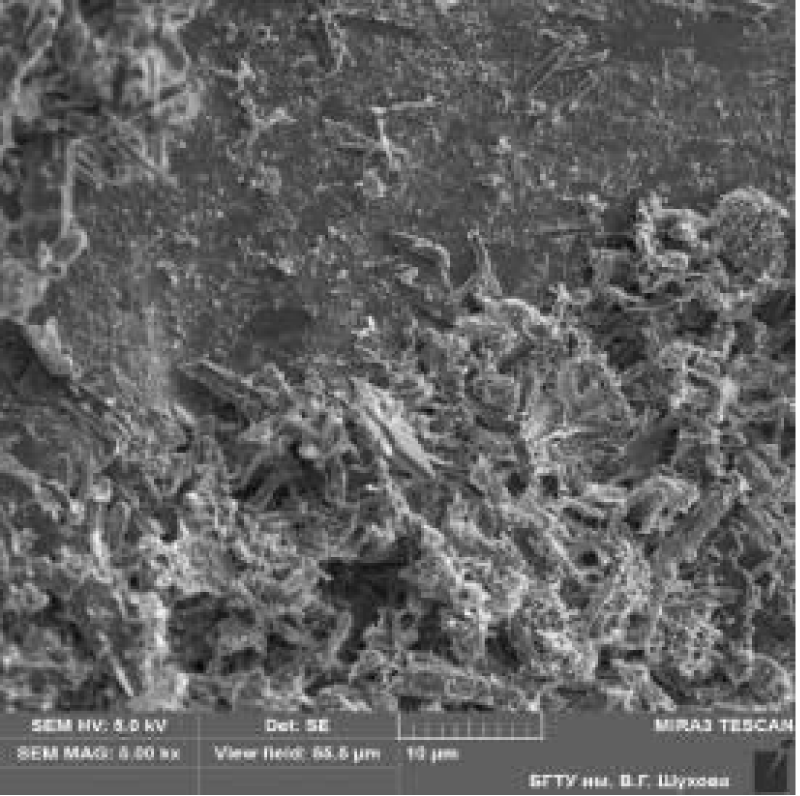Journal of Civil Engineering and Environmental Sciences
Concretes on a composite gypsum binder using limestone stone crushing waste
Natalia V Chernysheva1*, Othman Azmi SA2 and Motorykin Dmitry Aleksandrovich2
2Post-Graduate Student, Federal State Budgetary Educational Institutions of Higher Education, “Belgorod State Technological University named after VG Shukhov”, Russia
Cite this as
Chernysheva NV, Othman Azmi SA, Aleksandrovich MD (2023) Concretes on a composite gypsum binder using limestone stone crushing waste. J Civil Eng Environ Sci 9(1): 001-004. DOI: 10.17352/2455-488X.000059Copyright License
© 2023 Chernysheva NV, et al. This is an open-access article distributed under the terms of the Creative Commons Attribution License, which permits unrestricted use, distribution, and reproduction in any medium, provided the original author and source are credited.The article discusses the possibility of obtaining Composite Gypsum Binders (CGB) and heavy concretes based on them using local raw materials from Palestine. As an active mineral additive in the composition of the composite gypsum binder, it is proposed to use finely dispersed quartz sand with a specific surface area of 500 m2/kg, on the surface of which, during grinding, a disturbed microlayer is formed containing a limited amount of amorphous SiO2, which is capable of binding Ca(OH)2 at ordinary temperatures with the formation of insoluble compounds, that is, it has pozzolanic activity, and as a result provides a significant increase in the strength of composites, increases their water resistance. Based on the developed composite gypsum binder with sufficiently high strength (24.8 MPa) and water resistance (K = 0.73), heavy concretes were obtained with a class of compressive strength B7.5 - B15, for use in residential, public, and industrial buildings in the form of load-bearing, self-supporting and enclosing structures.
The main task of the construction industry in Palestine is to provide materials and products with the primary use of local natural and man-made raw materials for their manufacture while maintaining the traditional original architecture.
The most important branch of the national economy in Palestine is the stone industry. The coastal zones of the Mediterranean Sea have the richest reserves of calcite deposits, a rock-forming limestone mineral. Dense limestone (ρ = 2700 kg/m3) has sufficient strength – Rcomb = 60-80 MPa. However, this industry generates a huge amount of stone waste. About half a million cubic meters of stone processing waste is generated annually, which has a devastating effect on the environment; affects air quality, surfaces, and groundwater and pollutes agricultural soils (Figure 1).
The main requirement for the sustainable development of the country and in order to reduce environmental impacts, a strategy is being developed to support this industry sector. The stone of Palestine is almost the only natural resource in use that is exported abroad. Thus, in Palestine, the stone-working industry is the mainstay of the national economy. Globally, among stone producers, Palestine ranks 12th, which is equivalent to half of the production in Germany and about one-third of the production in Turkey.
The main component of stone processing waste is calcium carbonate, which is characterized by high purity - from 94% to 98% CaCO3, as well as the absence of pollutants with a low percentage of chemical elements such as iron and alkali metals.
Due to the increasing demand for ready-mixed concrete in the Palestinian markets. The focus should be on the use of crushed stone waste as aggregate and filler in concrete mix formulations, which will reduce the negative impact on the environment and solve economic problems in Palestine.
At present, in Palestine, the “green” construction of buildings and structures using innovative technologies from environmentally friendly building materials of a new generation is one of the progressive areas that contribute to the optimization of the “man-material-environment” system.
Particularly effective is the production of wall materials from heavy concrete using mineral fillers and aggregates from local natural and technogenic raw materials, which will reduce their cost and significantly reduce the construction time of buildings and structures [1].
The main component of heavy concrete, which largely determines its properties, is a binder. In construction, heavy concrete based on Portland cement and its varieties is most widely used (about 65% of the total production volume) with dense aggregates from rocks - granite, limestone, diabase, etc.)
One of the varieties of heavy concretes are concretes based on waterproof composite gypsum binders, which have a wide range of applications (construction of low-rise buildings, etc.) [2-7]. CGB- a new generation of gypsum-cement-pozzolanic binders - is a homogeneous mixture of gypsum binder (50% - 80%) with a hydraulic modifier obtained by joint mechanical activation of Portland cement with a silica-containing mineral additive, which is necessary to bind Ca (OH)2 released during the hydration of alite and belite and elimination of conditions for the formation of ettringite and highly basic calcium hydroaluminates in the hardening system.
Compared to traditional Portland cement concretes, heavy concretes based on GCB have a number of advantages (Figure 2).
They contribute to reducing the shortage of wall materials and a significant (at least 2 times) reduction in the construction time of buildings. provide a high and stable level of strength, lower production costs, high aesthetic and environmental performance, etc. Fast (but controlled) setting and hardening of molding sands on the CGB allows the production of wall products without heat treatment while simultaneously accelerating the turnover of forms.
Currently, concrete mixtures based on Composite Gypsum Binders (CGB) are not used in Palestine, although gypsum has been a traditional building material in this country since ancient times. Their use will expand the range of building materials to create comfortable housing for people.
The starting materials for the production of heavy concrete at the CGB were: gypsum binder β-modification grade G5B II (Palestine); Portland cement Type I 42.5 N (JOCM plant in Jordan), quartz sand from the Palestine deposit; screening crushing limestone.
CGB was obtained by mixing a carefully selected mixture of finely dispersed dry components: gypsum binder, Portland cement, and finely dispersed (with a specific surface area of 500 m2/kg) quartz sand (the chemical composition is presented in Table 1), on the surface of which, during grinding, a disturbed microlayer is formed, containing in a limited amount amorphous SiO2, which is capable of binding Ca(OH)2 at ordinary temperatures to form insoluble compounds, that is, it has pozzolanic activity, and as a result provides a significant increase in the strength of composites, increases their water resistance
Due to the fact that the activity and content of the mineral additive have a decisive influence on the stability of the CGB during hardening, its strict dosing is very important. The amount of the mineral additive in the CGB composition was determined by the concentration of CaO in aqueous suspensions of specially prepared preparations according to the method described in the appendix of TU 21-31-62-89, where it is indicated that the regulated concentration of Ca(OH)2 in the liquid phase of the hardening suspension should not be above 1.1 and 0.85 g/l (in terms of CaO), respectively, on the 5th and 7th days. A stable decrease in the concentration of Ca(OH)2 in CGB with the introduction of finely dispersed quartz sand is confirmed by the results of studies presented in Table 2.
A rational relationship was established between Portland cement and finely dispersed quartz sand, in which the hardening process of CGB will take place without dangerous internal stresses leading to volumetric deformations and the appearance of cracks. The concentration of CaO in a solution with a mineral additive of finely dispersed quartz sand was established with the obligatory ratio: sand: cement = 1:1. quartz sand -20 (Table 3).
For the production of wall materials based on CGB, heavy concrete compositions with coarse aggregate from limestone crushing waste were developed (Table 4).
As a fine aggregate, natural quartz sand with MF = 1.8 was used. The compositions of heavy concrete at the CGB and the main indicators of its properties are given in Table 5.
It was found that the strength of heavy concrete on CGB increases in proportion to the consumption of the binder. For concrete of the compressive strength class B7.5, the consumption of CGB is 340 kg/m3. With an increase in the strength of concrete, this difference increases, amounting to about 400 kg/m3 for the class of concrete in terms of compressive strength B10.
The physical and mechanical properties of concrete are influenced by the size and nature of the contact zone between the gypsum-cement stone and the aggregate [8-10]. In the study of the structure and properties of the contact zone of the hardened CGB with limestone crushed stone in a sample of heavy concrete, the following was revealed. The microphotographs obtained at a magnification of 2000 - 20000 times show that the aggregate surface is overgrown with fine-crystalline (≤0.1 mkm) neoplasms, presumably low-basic calcium hydro silicates, calcium sulfate dihydrate, etc., as a result of hardening of Portland cement and semi-aqueous gypsum, which indicates about sufficiently dense and good adhesion of the filler with the hardened matrix (Figure 3). Particles of neoplasms are combined into a network structure with reinforced bonds between negatively charged products of binder hydration as a result of the growth of low-basic calcium hydro silicates on gypsum crystals, which increases adhesion to the positively charged surface of limestone aggregate.
Thus, as a result of the research, it was found that the introduction of fine quartz sand as a mineral additive into the composition of the CGB (at a ratio of sand: cement - 1:1) helps to ensure the performance and stability of the properties of the hardened binder.
The sufficiently high strength of CGB (24.8 MPa) and water resistance (K = 0.73) made it possible to develop heavy concretes on its basis, having a compressive strength class of B7.5 - B15, for use in residential, public, and industrial buildings in the form of load-bearing, self-supporting and enclosing structures. They can be made of large- or small-sized elements, as well as in a monolithic form. The rapid hardening of concrete on the CGB allows for the removal of the molded products from the molds in 1 - 1.5 hours, especially if the molding is done in a vertical position.
Gratitude
The work was performed using the equipment of the Center for High Technologies of the Belarusian State Technical University. V.G. Shukhov.
- The use of local sands and industrial waste in building solutions / SAYu Murtazaev, NV Chernysheva, AS Uspanova, BT Murtazaev // Bulletin of the DSTU. Technical science. 2011; 3:22; 141–148.
- Ferronskaya AV. Gypsum in low-rise construction. M. Publishing House ASV. 2008. 240.
- Chernysheva NV, Lesovik VS, Drebezgova MYu. Waterproof gypsum composite materials using technogenic raw materials: monograph. Belgorod: Ed. BSTU. 2015; 320.
- Drebezgova MYu, Chernysheva NV, Gerasimov AV. Domestic and foreign experience in the use of gypsum materials in monolithic construction. Vestnik BSTU im. VG. Shukhov. 2016; 11: 23–26.
- Drebezgova MYu, Chernysheva NV, Shatalova SV. Composite gypsum binder with multicomponent mineral additives of different genesis // Vestnik BSTU im. VG. Shukhov. 2017; 10:27–34.
- Improvement of performances of the Gypsum-Cement Fiber Reinforced Composite (GCFRC) / Chernysheva N, Lesovik V, Fediuk R, Vatin N. Materials. 2020; 13(17):3847.
- Calculation and selection of high-density grain composition of aggregate and concrete on a gypsum composite binder/ NV Chernysheva, AN Kharhardin, Elyan Issa Zhamal Issa MYu. Drebezgov // Bulletin of the BSTU. VG Shukhov. 2014; 2:43-48.
- Kurbatov VL. Technological processes in construction: Textbook / VL Kurbatov, VI Rimshin, EYu Shumilova, MV Dayronas - M.: - DIA. 2020; 601.
- Litho-mineralogical and physico-chemical aspects of improving efficiency of manufacturing fine-grain concretes with technogeneous sands. Komarova ND, Kurbatov VL, Litvinova YV. Biosciences Biotechnology Research Asia. 2015; 12: 2; 1381-1388.
- Rakhimbaev Sh.M. On the influence of basicity and porosity on the strength characteristics of silicate materials // Rakhimbaev ShM., Kaftaeva MV, Kurbatov VL, Komarova ND, Telichko AV. Basic research. 2014; 3-1:35-38.
Article Alerts
Subscribe to our articles alerts and stay tuned.
 This work is licensed under a Creative Commons Attribution 4.0 International License.
This work is licensed under a Creative Commons Attribution 4.0 International License.





 Save to Mendeley
Save to Mendeley
